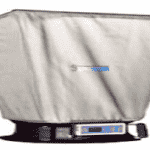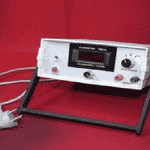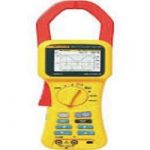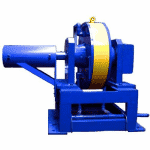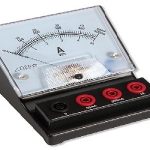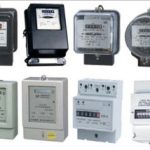The initial development of the bolometer was done by Samuel Langley in the year 1878. Later on, in 1880, there were few modifications to the instrument in order to detect thermal radiation which holds the ability to thermally detect a wide range of spectrum including Fraunhofer lines. Then, Langley’s bolometer was used by Nikola Tesla for the application of power transmission in the year 1892. With this, the initial demonstration using a bolometer got … [Read more...]
What is Flux Meter : Construction, Working & Its Uses
In the field of physics, particularly in electromagnetism, the concept of magnetic flux across the surface is defined as the surface integral of the general factor of the magnetic field which is represented with ФB. In order to measure the magnetic flux, there has to be a device, and it is the flux meter. Even though the development of flux meters started many years back, the usage of these devices started a few decades back. Now, with the advancement, … [Read more...]
What is a Clamp Meter : Operating Principle & Its Types
A clamp meter is one of the common devices used to measure the current flowing in a circuit. The best advantage of this device is, it need not be brought in contact with the circuit. We need to clamp the ports around the wire and it will measure the current flowing through the wire. Unlike a multimeter, where it needs to be connected to the circuit, this meter can measure current without getting in touch with the circuit itself. It can be used to measure … [Read more...]
What is Ballistic Galvanometer : Construction & Its Working
The ballistic galvanometer is an instrument, which is used to measure or indicate current in a closed circuit. The galvanometer also is known as PMMC instrument, works on the principle of permanent magnet moving coil. The force is generated on the coil, due to Lorentz Force Law. Due to the interaction of fluxes, the pointer in the meter is deflected. Once the pointer is deflected, different torques are exerted on the pointer to make pointer stop at its … [Read more...]
What is Eddy Current Dynamometer : Working & Its Applications
Initially in the period 1931, the eddy current dynamometers were invented by Martin and Anthony Winther. From the year 2002, these dynamometers are manufactured with a license under Dynamatic and Eaton production line. But these instruments were not so popular because DC generators and motors were more in popularity and implementation. Being so suitable for modern-day frameworks, these devices are implemented in sophisticated applications too. Basically, a … [Read more...]
What is Hot Wire Anemometer : Construction & Its Working
Well, let us start the topic of hot wire anemometer by knowing its history first, then we can move into the detailed concepts. Initially, the enhancement of an anemometer started in the 15th century. The first anemometer was invented by Alberti in the year 1450 and it is of mechanical type. Then, many versions came into existence developed by many scientists. In the year 1846, Romney enhanced the anemometer design by implementing mechanical rotational … [Read more...]
What is an Ammeter : Working, Classification & Applications
An ammeter is a combination of words ampere and meter or we can say an instrument that measures ampere (current). Electrical quantities are to be continuously monitored being very dynamic. Real-time monitoring of current is of utmost importance as the current is the most flexible/dynamic electrical quantity. An Ammeter which facilitates monitoring of current is a basic instrument in electrical engineering. Approximately eighty percent of electrical … [Read more...]
Explain about 3 Basic Types of Energy Meters?
Watt hour meter or energy meter is an instrument which measures amount of electrical energy used by the consumers. Utilities install these instruments at every place like homes, industries, organizations to charge the electricity consumption by loads such as lights, fans and other appliances. Most interesting type are used as prepaid electricity meters. Basic unit of power is watts. One thousand watts is one kilowatt. If we use one kilowatt in one hour, … [Read more...]
